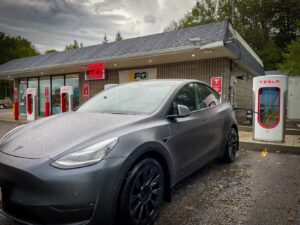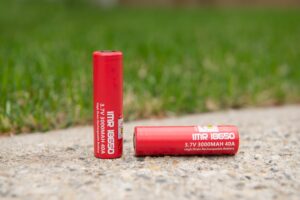With an anxiety-inducing EV road trip to Yellowknife coming up – and an even more remote drive to the Arctic Ocean planned for fall – I figured now was the perfect time to finally test out the new Tesla battery health check.
My 2022 Tesla Model Y is sitting at just over 51,000km (31,700 miles), and even though I don’t drive around the city much, I’ve racked up those kilometers on some pretty epic EV road trips across Canada and the US.
From Newfoundland to the Oregon coast and everything in between, I’ve pushed my Model Y across coastlines, mountains, and rural gaps in the Supercharger network.
So how much battery degradation have I actually seen? Is Tesla’s new battery health check tool legit? Here’s what I learned using the new diagnostic feature – and what it means for long-distance EV travel.
What Is the Tesla Battery Health Check and When Did It Launch?
Tesla quietly rolled out the battery health check in software version 2024.20. The feature lives in the Service menu under Battery Health, and for many owners like myself, it’s a welcome addition — especially for those clocking serious road trip miles or eyeing a potential dip in range.
The tool promises to measure your battery’s remaining full-charge range and compare it to what it was rated for when new.
It’s great for transparency, but there’s been some skepticism — particularly around Tesla’s battery warranty and whether this is a subtle way of setting customer expectations lower or even fudging the results. We’ll get into that more later.
Why I Decided to Run the Battery Health Test
I don’t charge to 100% ever, at least not with my 2022 Tesla Model Y. I did a couple of times with my 2020 Tesla Model Y but then found out it’s not great for battery health. At home, I typically charge to 57% based on a deep dive into battery optimization by a guest contributor Arden Shibley.
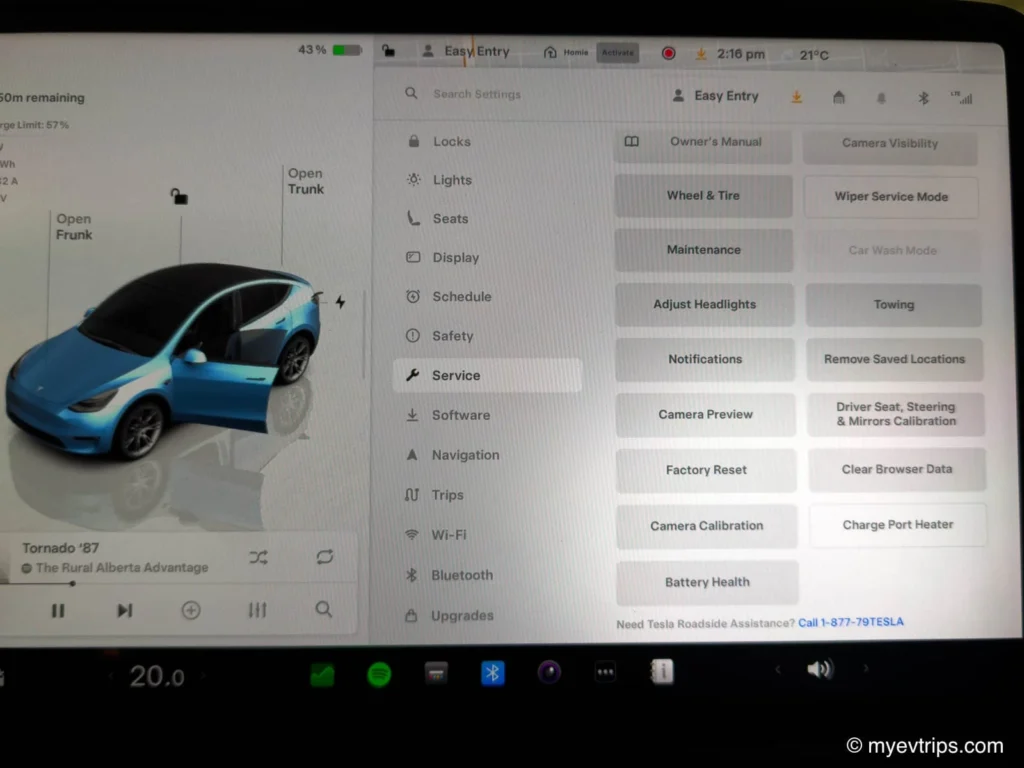
On road trips, I rarely hity 90% and generally tried to stay in the 80–85% range. I’ve heard this helps preserve long-term health. Curious how all of that impacted my EV battery degradation, I decided to run the new Tesla battery test.
How to Run the Tesla Battery Health Test
To chec your EV battery degradation, you’ll need:
- Tesla software version 2024.20 or newer
- Vehicle connected to Wi-Fi or cellular network
- Battery charge below 20%
- Car plugged into a charger
- Sentry Mode turned off
I found all of this easily under the Service > Battery Health section. My checklist was all green – except for battery level.
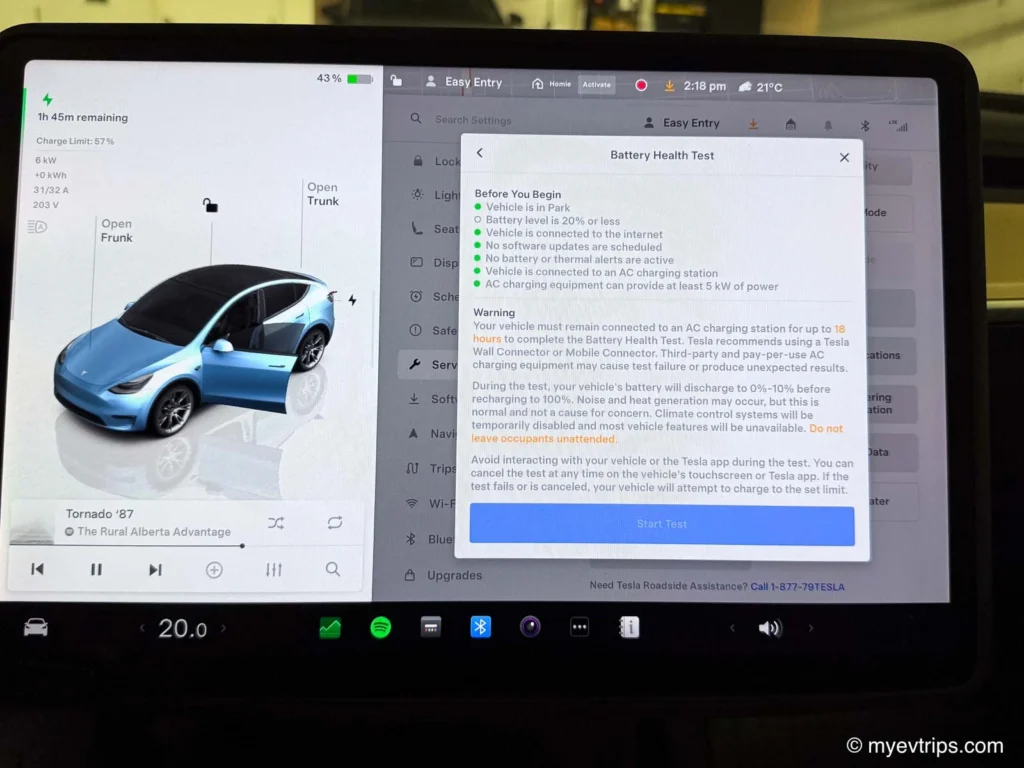
Since I don’t drive much during the week, I had to drain it manually. To do this, I unplugged the car and left Sentry Mode on overnight. This dropped the charge about 10% per day.
Once I got the battery below 20%, I was able to test Tesla battery degradation through the service menu.
After tapping it, the prompt explained that the process would discharge the battery from 20% to below 10%, then recharge it to 100%, analyzing capacity during the process.
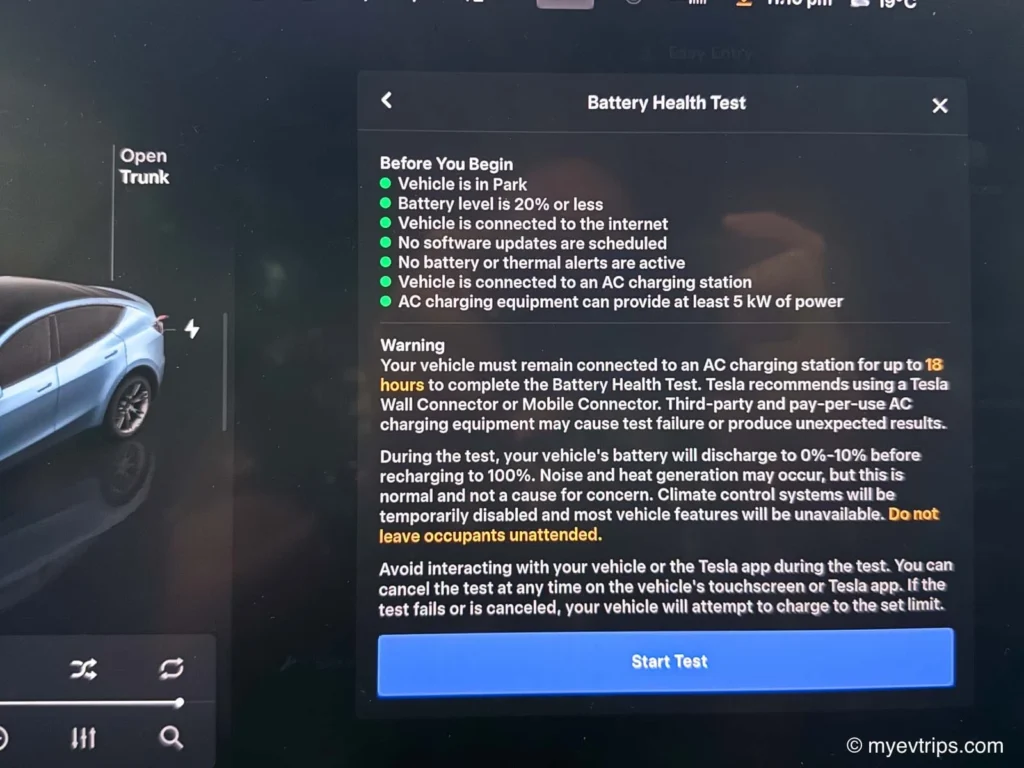
It estimated the whole process would take 18 hours, and it advised not to interact with the car during this time — meaning no app check-ins or vehicle wake-ups.
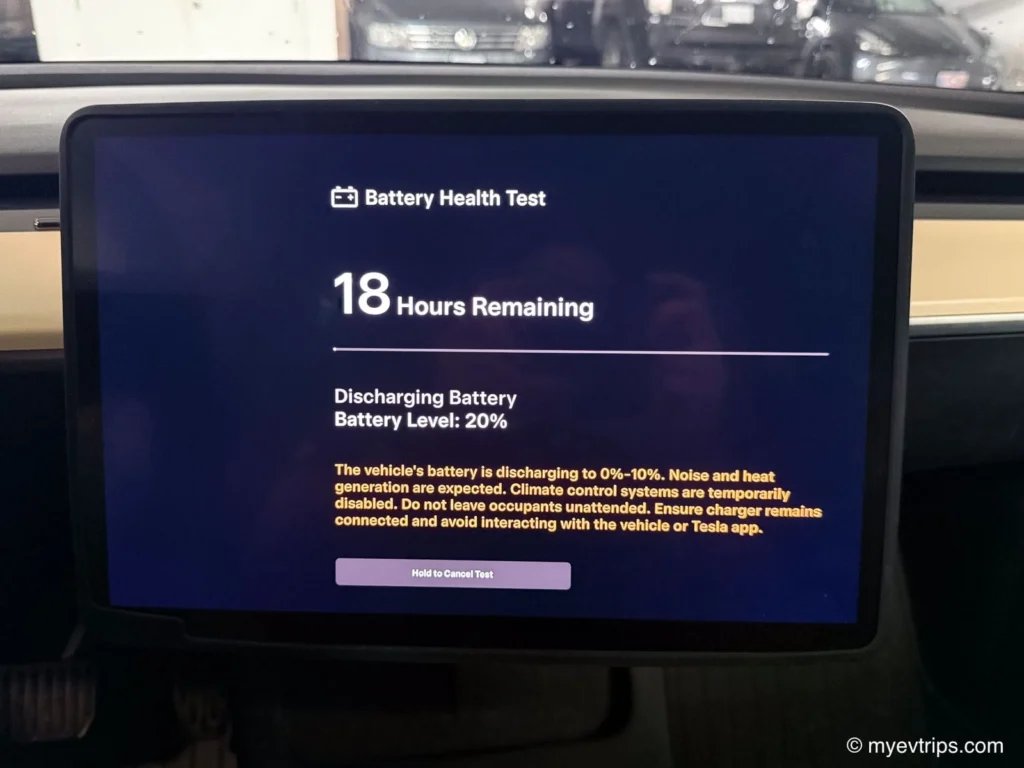
Given this, don’t run the Tesla battery degradation test if you’re planning on needing your car or want Sentry Mode active overnight. Still, Tesla gives the option to cancel at any time.
The Results – How Much Battery Degradation After 51,000km?
The next day, I checked the car and saw there were still two hours to go. I planned to return to it later, but to my pleasant surprise, I got a notification through the app — the test was complete.
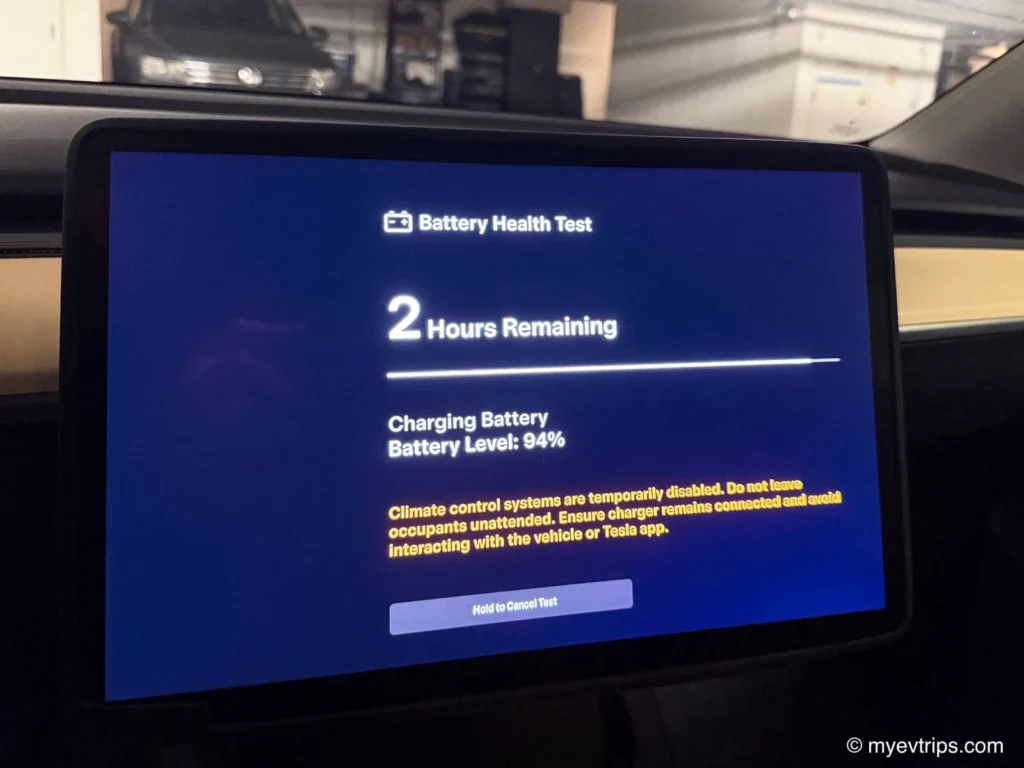
And the results? I’ve lost 11% of my battery capacity. A full charge now shows 465 km (289 miles), down from the originally rated 525 km (326 miles).
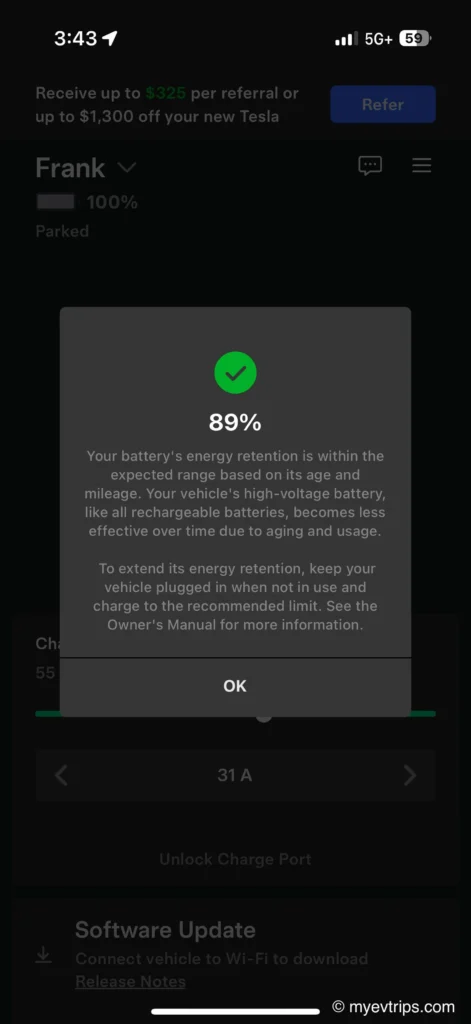
Now, this is where things get interesting. That original 525km figure was Tesla’s early estimate.
After backlash and a class-action lawsuit in the US over exaggerated range, Tesla quietly revised its range estimates. So, whether 465km is actually 89% or more of the real-world battery health is a bit murky.
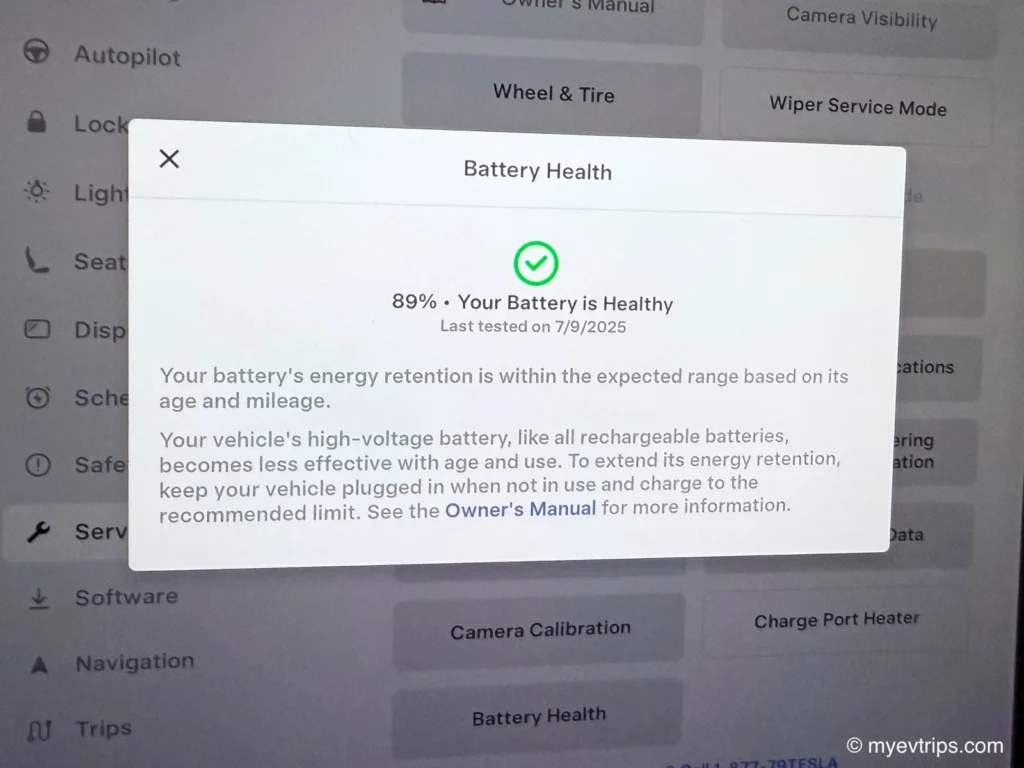
From what I’ve seen online, anything between 80–90% of original range is considered normal degradation over a few years. Still, it’s a bit of a gut punch to see a hard number. I debated running the test at all, thinking maybe ignorance is bliss.
But with some long 400km+ stretches coming up on the way to Yellowknife, I’m glad I did. Now I know I’ll likely need to top off at 100% more often — something I’ve never done before with this car.
Tesla Battery Degradation Warranty – What’s Covered?
Tesla’s battery warranty for the Model Y (Long Range and Performance) covers 8 years or 192,000km (120,000 miles), whichever comes first. They guarantee at least 70% battery retention during that time.
So even though I’ve lost 11% of my range, I’m still well within the warranty’s threshold. That said, Tesla doesn’t offer any official degradation readings through service centers – making this new DIY battery check tool even more valuable. It’s the first official glimpse many owners will get into their battery’s real-world aging.
Tips to Maximize Tesla Battery Health and Range
Here’s what I’ve done to maintain battery health – and what I’d recommend:
- Daily charging between 50–60% when not driving long distances
- Avoid 100% charging unless you absolutely need the range
- Stay between 20–90% as your regular charge routine
- Use scheduled departure to precondition your battery in cold weather
- Drive efficiently — reduce hard acceleration and use regenerative braking
- Avoid keeping your battery low for long periods (below 10%)
We go into more details on this in my post on how to preserve EV battery life.
Is the Tesla Battery Health Test Worth Running?
Absolutely — with a few caveats. If you’re planning a major road trip (like my return trip to the Arctic Ocean) or just want peace of mind about your battery’s health, it’s a useful tool. It’s free, relatively easy to run (once your battery is drained), and gives you hard numbers.
That said, be prepared for a bit of range anxiety when you see your full-charge number is lower than expected. For some, that might not be worth the stress.
In my case, it validated my conservative charging strategy and gave me valuable data to plan my next big trip. It might even help when it comes to to sell the car to make room for my Rivian R2.
FAQ – Tesla Battery Health Check
How do I access the Tesla battery health check?
Navigate to Service > Battery Health in your Tesla’s main menu. Make sure your software is updated to version 2024.20 or later.
How long does the test take?
Tesla estimates up to 18 hours. It discharges to near 0%, then charges back to 100%, testing range throughout.
Can I use the car during the battery health test?
No. Tesla recommends not interacting with the vehicle or app during the test. It can be canceled, but it’s best to run it overnight or when you won’t need your car.
Is battery degradation normal in a Tesla?
Yes. Most owners report 10–15% degradation over 3–5 years. Tesla considers anything above 70% battery retention within warranty norms.
Does Tesla’s warranty cover battery degradation?
Yes, but only if it drops below 70% within 8 years or 192,000km (120,000 miles).
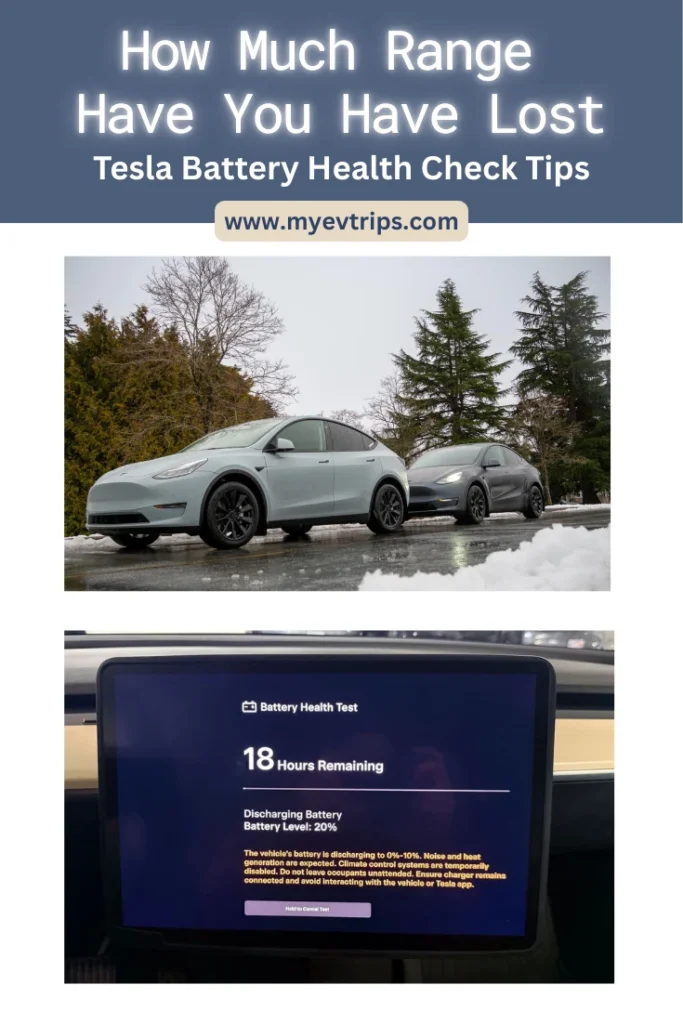
SAVE ON A NEW TESLA!
Thinking of buying a Tesla? Use this referral link to get up to $1,300 off!*
*As of August 2024, Tesla has reinstated its referral program and introduced attractive financing options!


